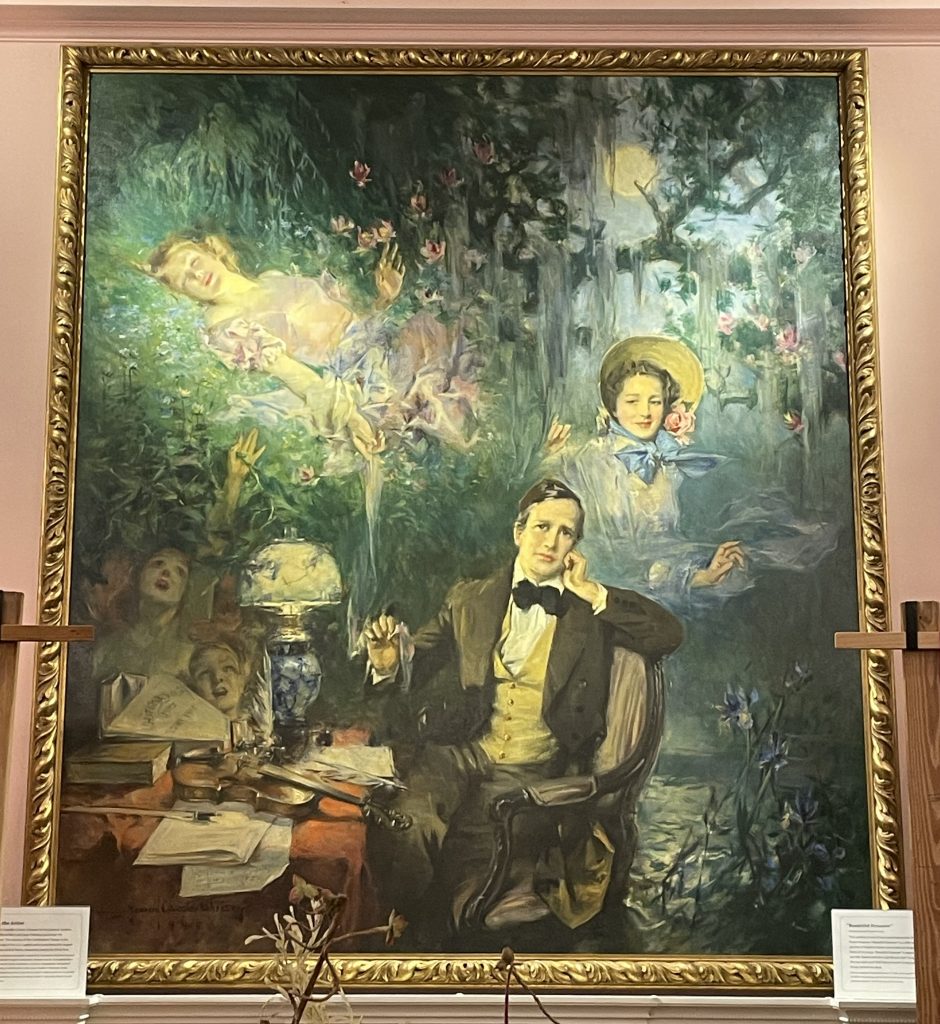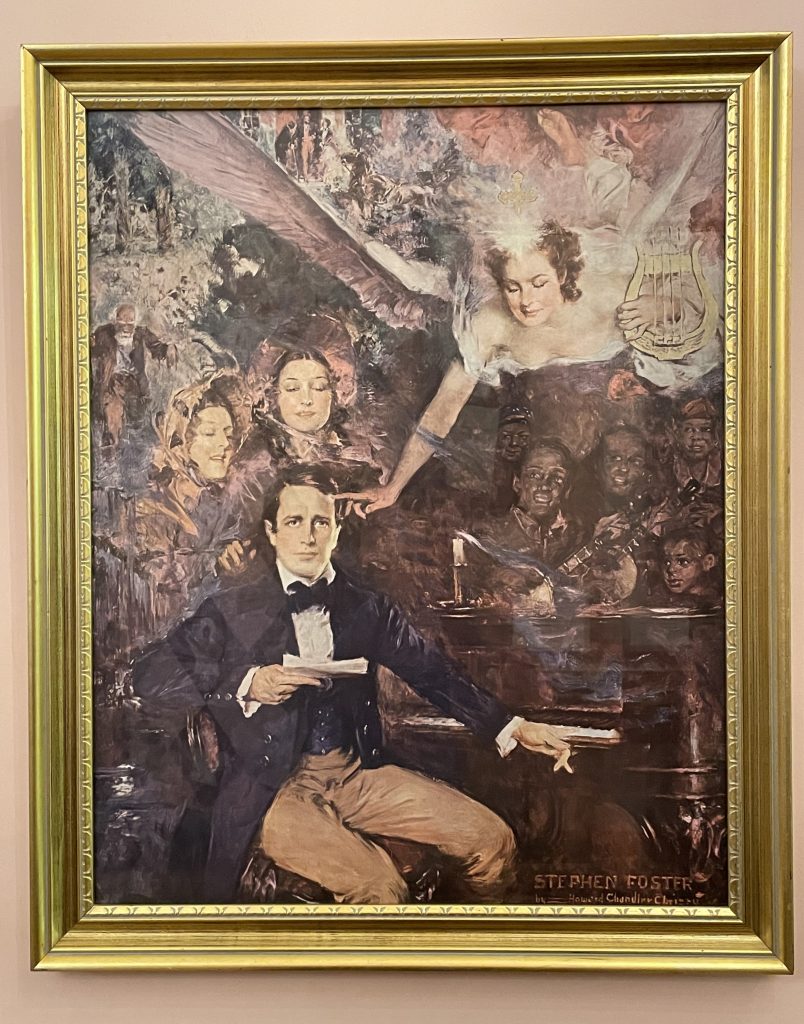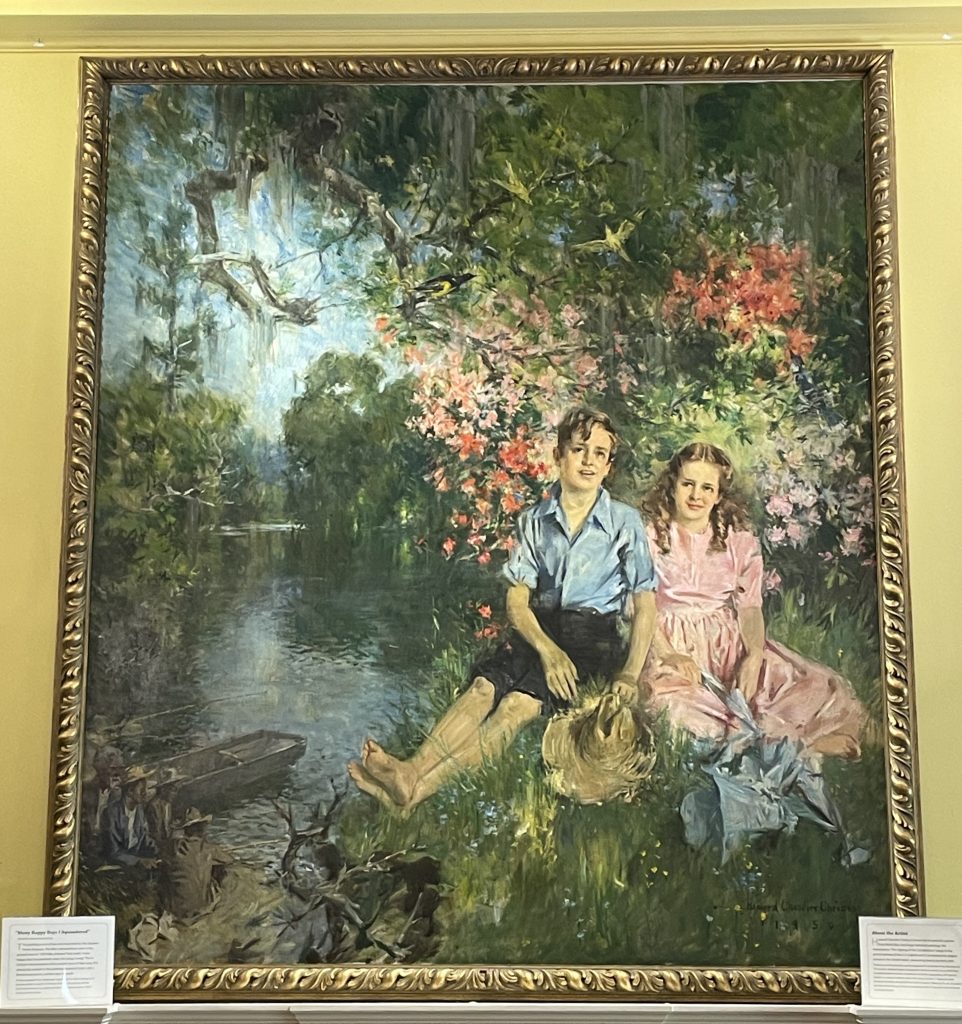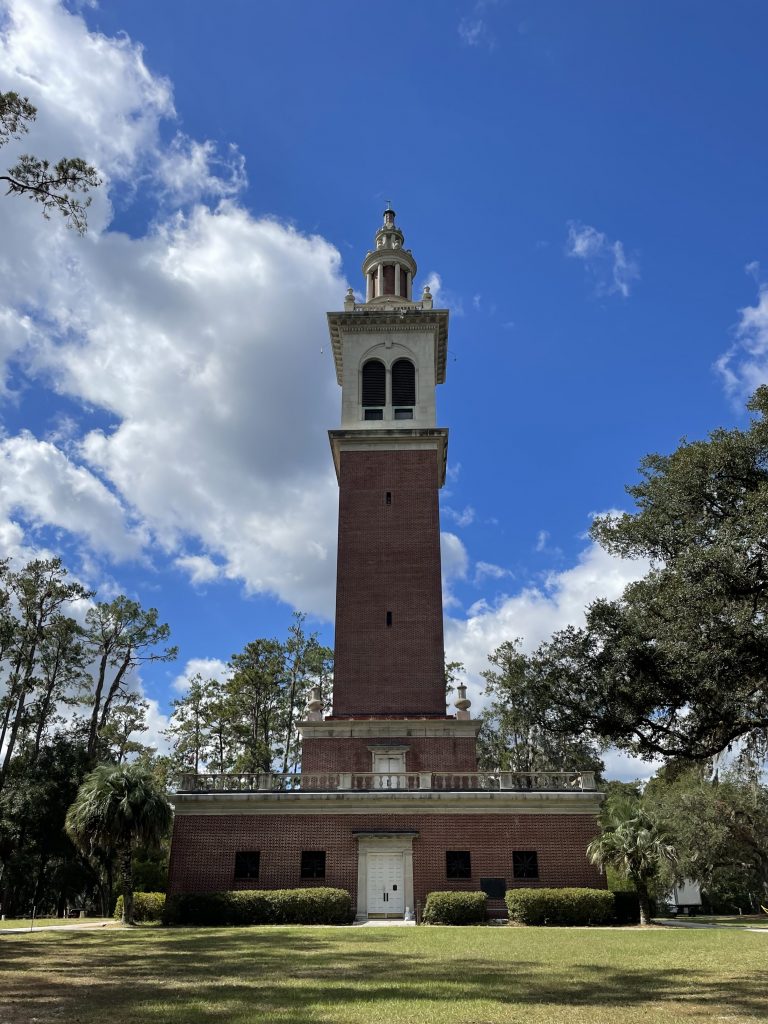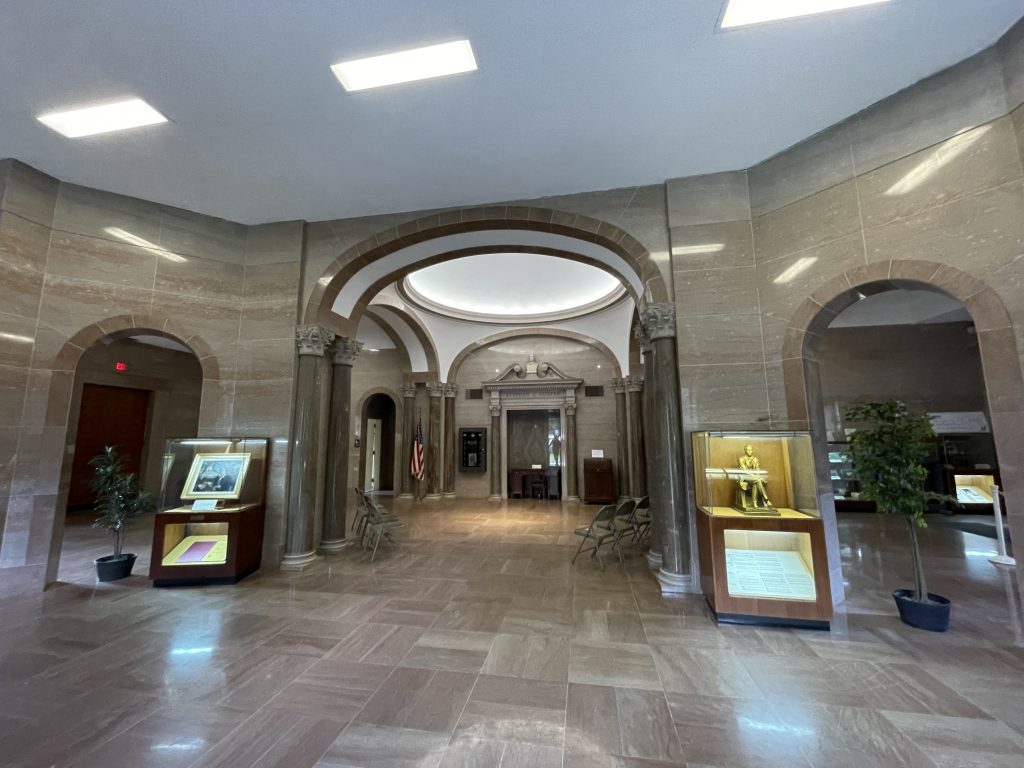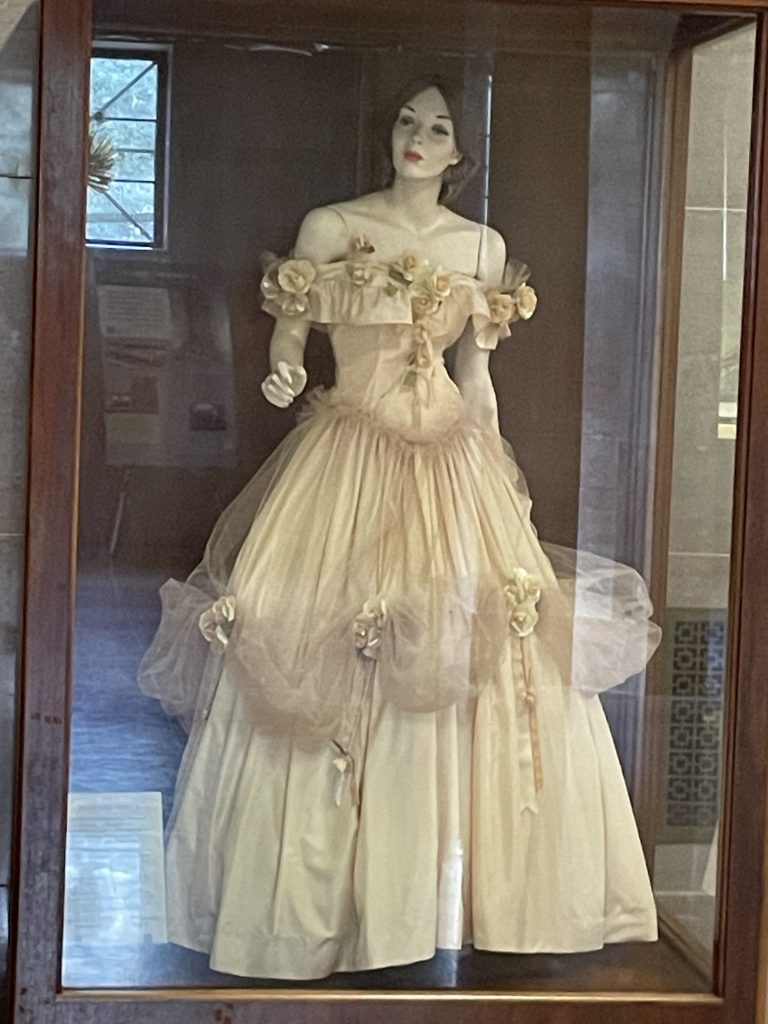Doug and I went to the Stephen Foster Museum located in Stephen Foster Folk Culture Center State Park while passing by White Springs, Florida.
Who is Stephen Foster you ask? Well, you won’t find out in the museum.
Seriously, there was absolutely no information about Foster the man in the museum. I had to Google it myself. (Doug, of course, knew who Foster was, which is why we were there, but I had no idea, as usual.)
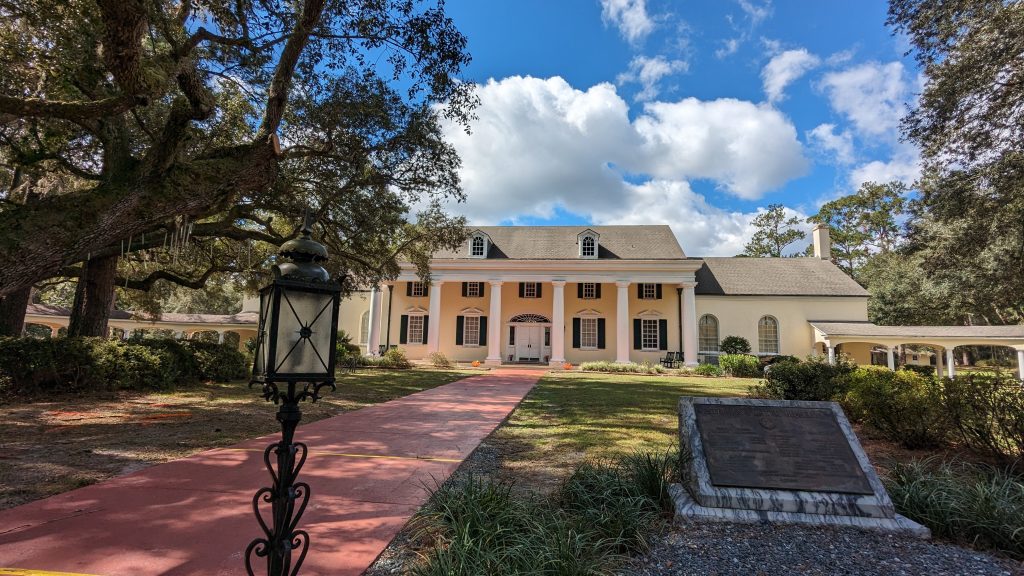
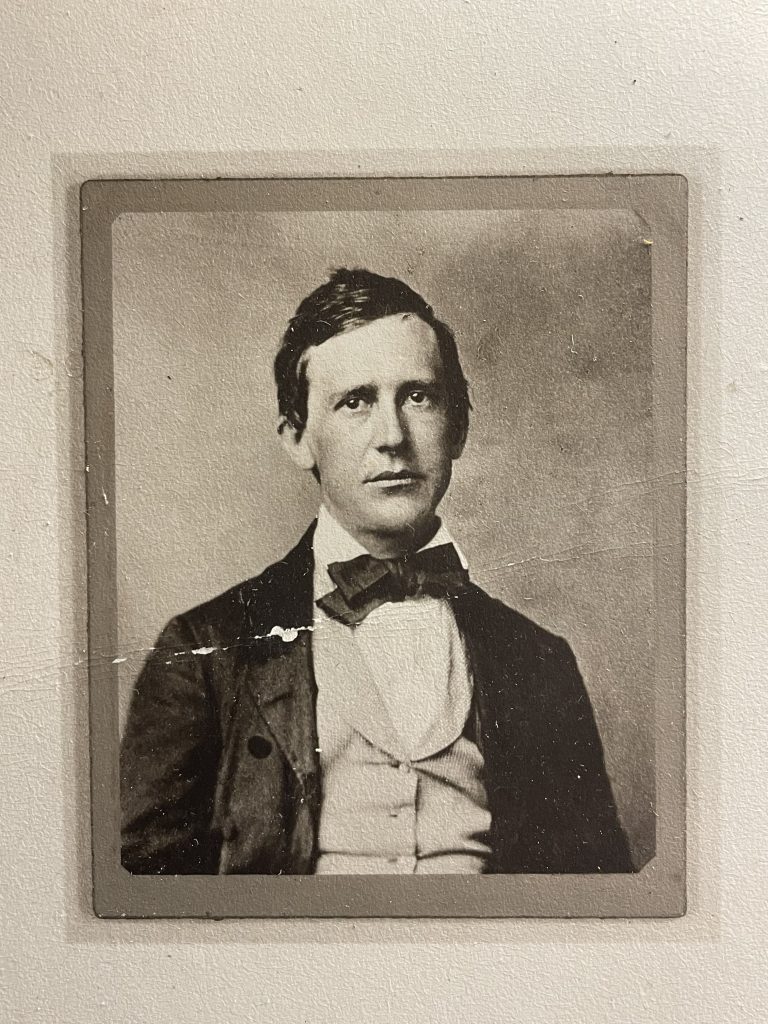
For starters, Stephen Foster wrote the song “Old Folks At Home” (1851), which is also known as “Way Down Upon the Suwannee River.” This song is Florida’s state song (seriously, not mentioned in the “museum”!) and the Suwannee River runs through the park, hence why it is located where it is.
[Fun fact about this song: Ray Charles had his first hit in 1957 with his version of the song, “Swanee River Rock (Talkin’ ’Bout That River)”.]
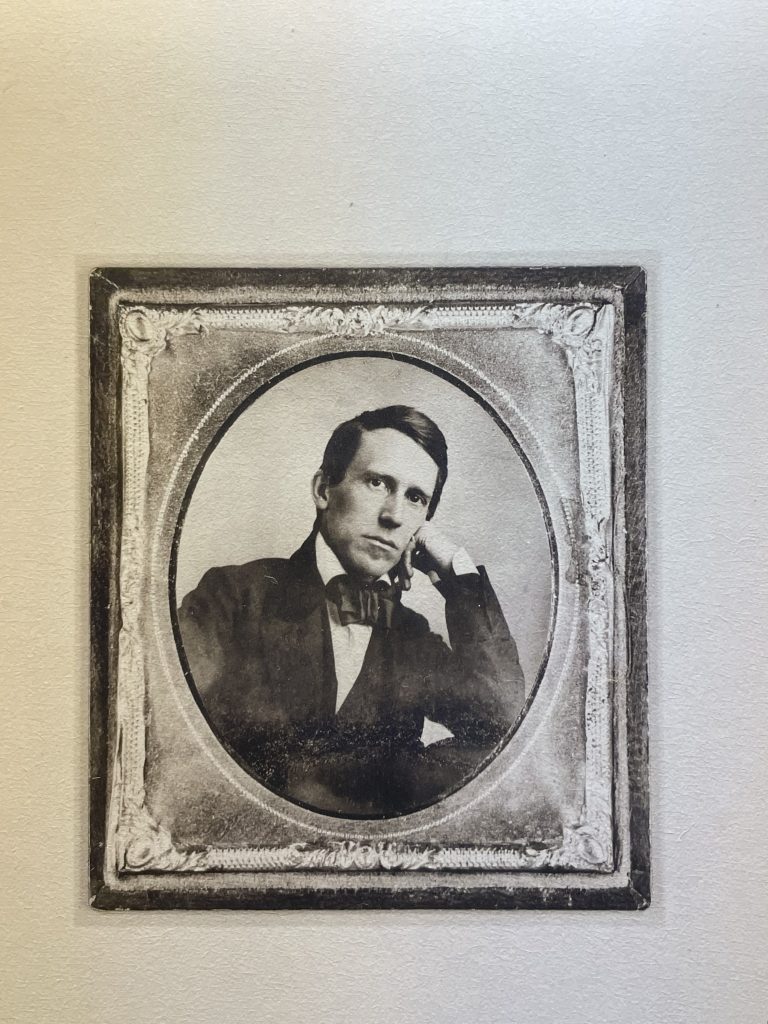
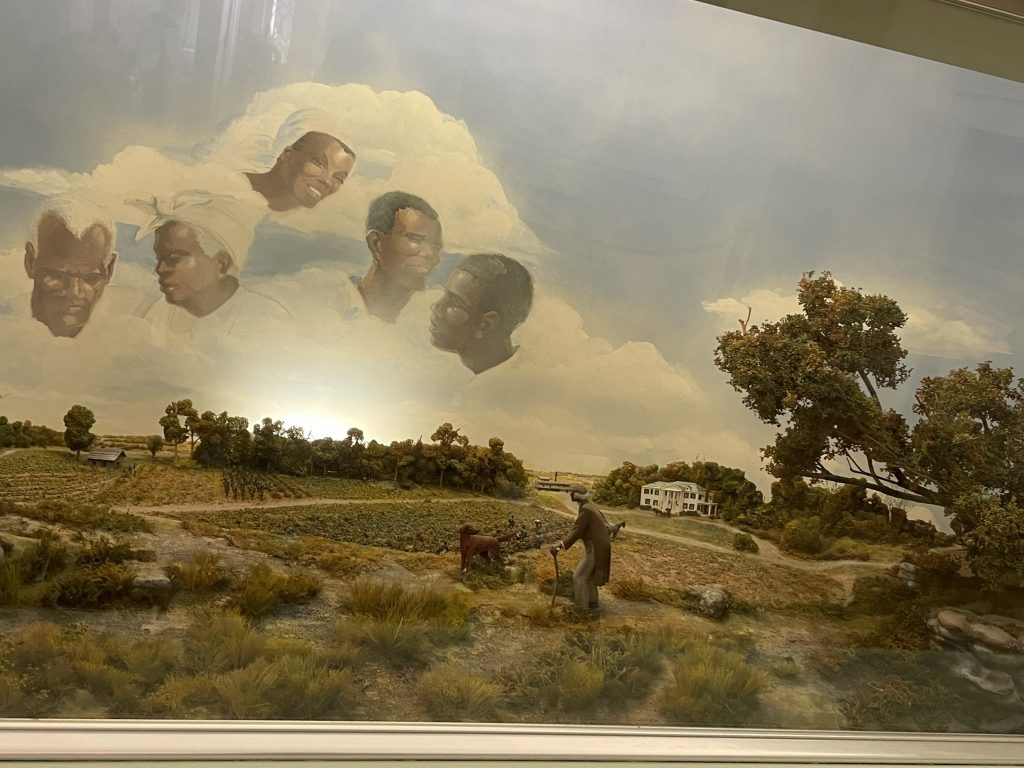
Inside the museum are miniature dioramas of his famous songs that were built for the museum in 1950, and they are something. A signboard nearby says:
Enslaved people are shown smiling, fishing, playing banjos and behaving leisurely in some of these dioramas. They were built during the violent era of oppressive Jim Crow laws that enforced racial segregation…. Images of ‘happy slaves’ permeated popular culture, disguising the reality of slavery’s harsh conditions, grueling work and absence of freedom…. These dioramas include examples of how slavery and the ‘Old South’ were inaccurately portrayed.
The dioramas include animated features and were finely crafted, each devoted to a single Foster song.
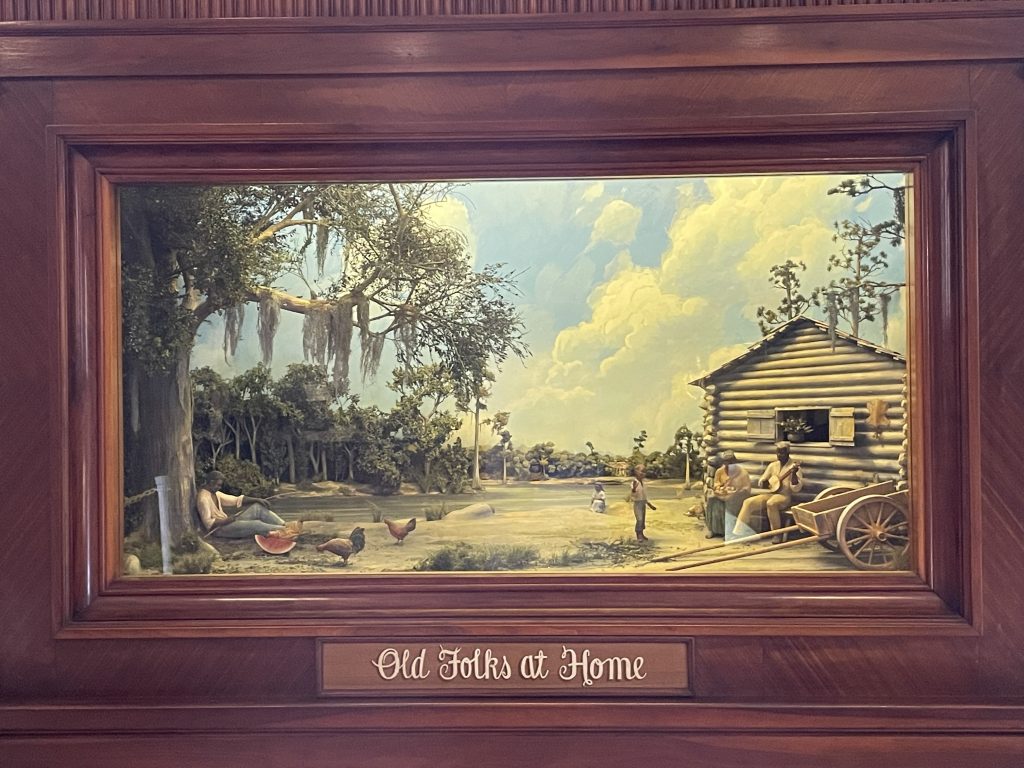
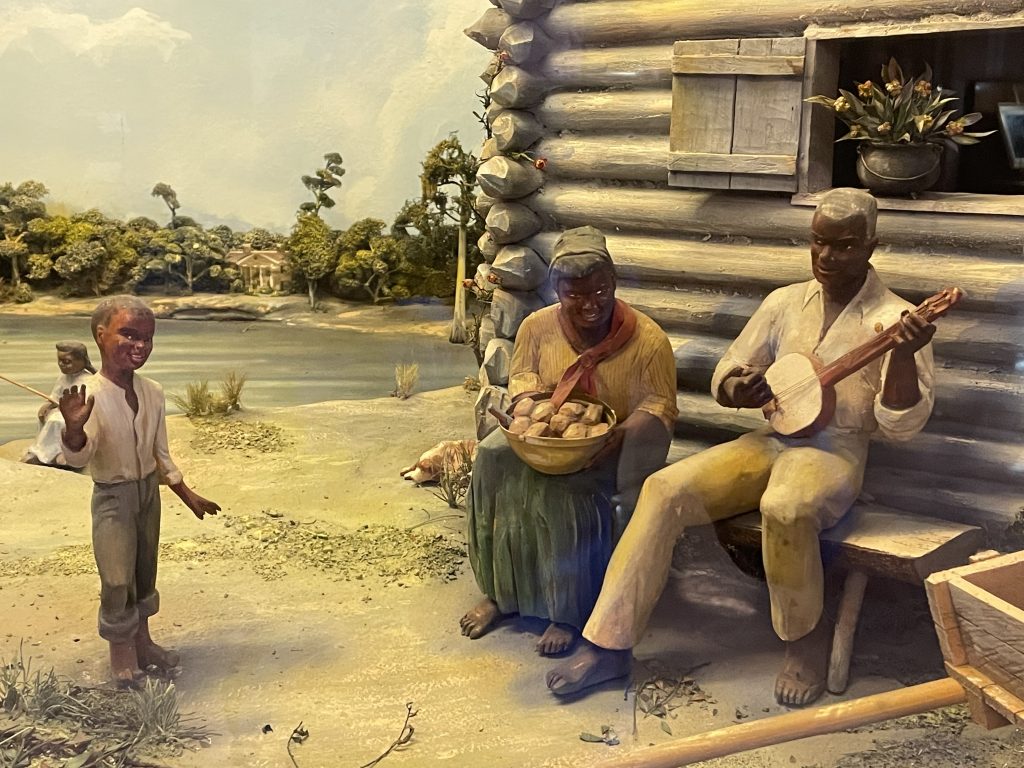
Also on the site is a carillon that had been constructed for the Florida exhibit at the 1939 World’s Fair. With 75 bells, it was the largest carillon in the world at the time.
It was a gift of the Stephen Foster Memorial Association, with the intention that it would be placed at a new Foster memorial building after the fair.
It took until 1958 for the installation to happen, by which time the bell count had increased to 97! The carillon used to play Foster’s songs throughout the day, but it was damaged by an electrical storm in 2017 and is sadly still awaiting restoration.
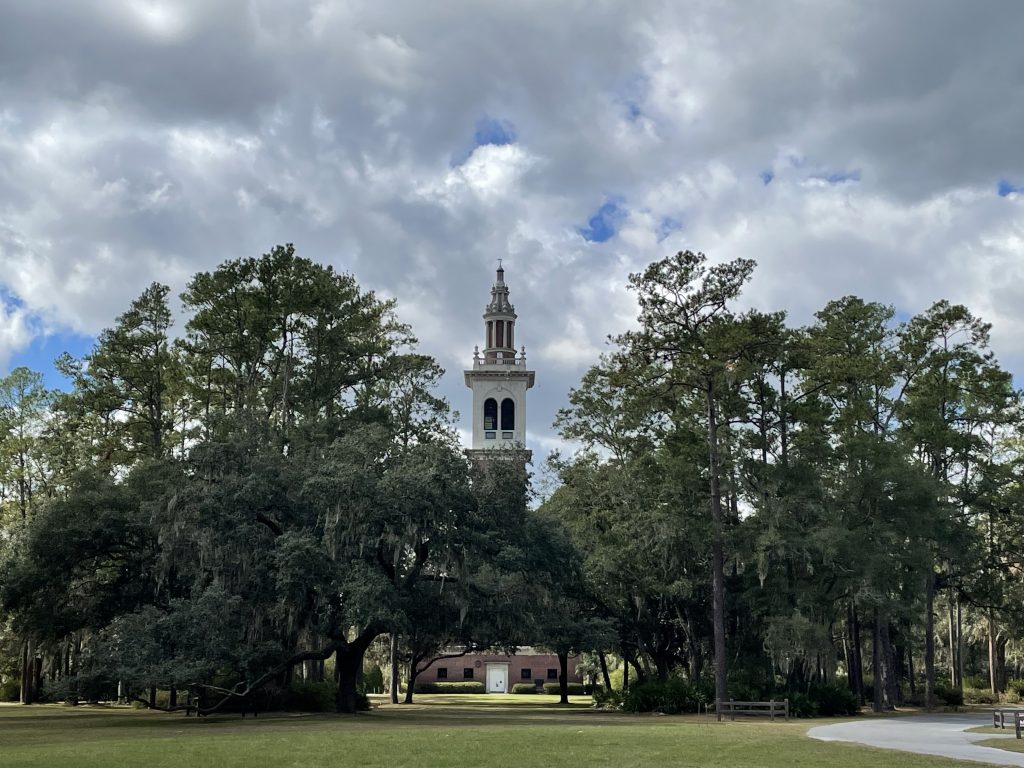
Foster, who lived from 1826 to 1864 (just 37 years old when he died), was known as “the father of American music.” He taught himself to play the clarinet, guitar, flute, and piano, and learned composition under a teacher.
He wrote more than 200 songs, including many that are still familiar today: “Oh! Susanna”, “Hard Times Come Again No More”, “Camptown Races”, “My Old Kentucky Home” (the state song of Kentucky), “Jeanie with the Light Brown Hair”, “Old Black Joe”, and “Beautiful Dreamer”.
His songs were of an earlier style that was popular in minstrel shows, and later became primarily “parlor music.” He also wrote a number of hymns, and arranged works by Mozart, Beethoven, Schubert and others for flute and guitar.
Interestingly, many of his songs had Southern themes, though he only visited the South once! He lived and worked primarily near Pittsburgh, Penn.
In 1864 Foster became sick with a fever. It is not clear if his subsequent fall and neck injury was accidental or self-inflicted, but he died in Bellevue Hospital in New York City.
